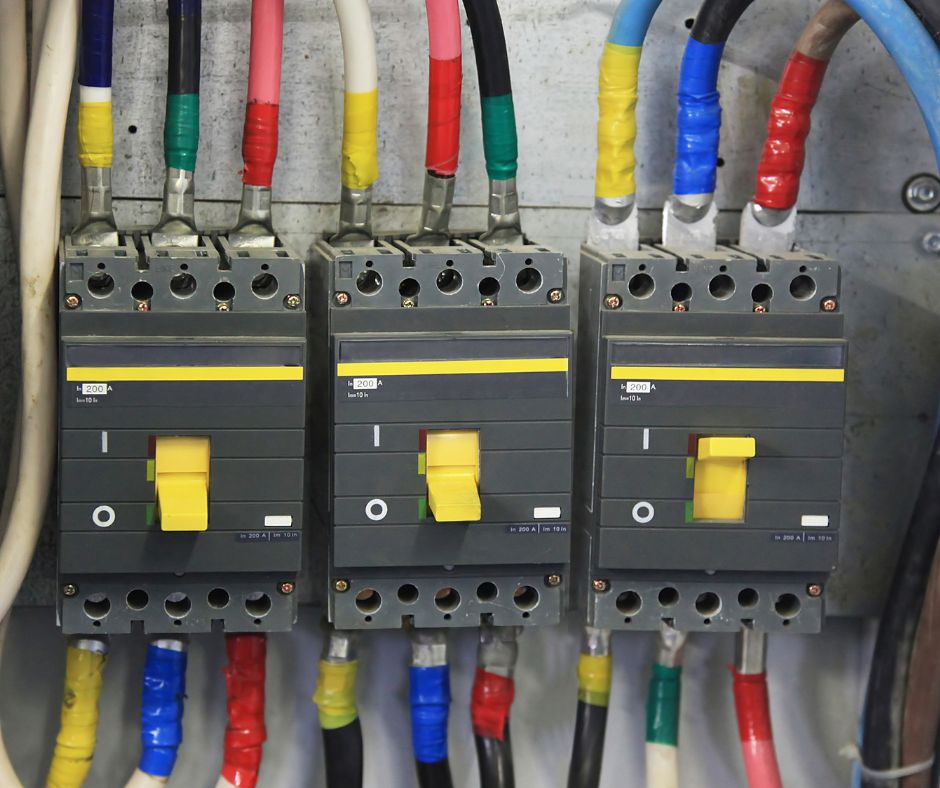Understanding the Vital Role of Electrical Insulation Tape in Ensuring Electrical Safety
Electrical insulation tape is an essential tool for protecting and insulating various types of electrical wires and cables. Often referred to as insulating tape, this crucial component significantly contributes to safety in both professional and residential settings. By effectively preventing electrical shorts and providing a barrier against moisture, dust, and abrasion, this tape is indispensable for maintaining the functionality and safety of electrical systems. Gaining a clear understanding of its importance empowers you to avoid potential hazards while fostering a well-organized and efficient workspace that prioritizes safety.
Electrical insulation tape is available in a wide array of sizes, lengths, and colors, crafted from various materials to meet specific application needs. These diverse options not only enhance insulation effectiveness but also facilitate easy identification and organization of cables through systematic color-coding. Utilizing different colors can greatly streamline your electrical work processes, enabling quick and efficient identification of specific wires and ultimately improving your productivity and overall organization in any project.

Evaluating the Conditions Under Which Electrical Tape Melts: Essential Insights
Indeed, electrical tape can melt under specific conditions. This article will provide a comprehensive exploration of the temperature limits associated with electrical tape, outline the circumstances that may lead to melting, and highlight crucial signs of overheating that you should vigilantly monitor. Recognizing these factors is paramount for ensuring the safe and effective use of electrical insulation tape across various applications, thus safeguarding both people and property from potential hazards.
Exploring the Temperature Limits of Electrical Tape for Safe and Effective Application
Like many materials, electrical tape has defined temperature limits that must be respected for safe usage. Most standard electrical tapes are designed to withstand temperatures up to approximately 80°C, although there are heavy-duty varieties that can tolerate slightly higher temperatures. When the environmental conditions exceed these thresholds, the structural integrity of the tape may begin to deteriorate, leading to potential failures that can compromise safety.
As temperatures rise and approach the maximum limits, the performance of electrical tape starts to decline. This degradation can manifest in various ways, such as melting, a gooey texture, or, in extreme cases, complete failure of the tape. Being aware of these temperature limits is crucial for maintaining safety and efficacy in electrical applications, ensuring that your projects can be successfully completed without unnecessary risks or complications.
For those working in extreme environments, it is wise to consider utilizing high-temperature variants of electrical tape. For example, heat-resistant tape, made from materials like fiberglass or silicone, can endure temperatures of up to 200°C or even higher, making it an ideal choice for applications exposed to intense heat and demanding conditions.
Also Read: Keep Your Pets Safe Around Electricity
Request a Quote Today!
Inquire About Our FREE Electrical Inspections

Identifying the Key Factors That Contribute to Electrical Tape Melting
Electrical tape melting can occur due to several factors, primarily linked to exposure to extreme heat. Understanding these causes is essential for ensuring safe and efficient usage of electrical tape. Here are some prevalent reasons that contribute to the melting of electrical insulation tape:
Understanding the Impact of Heat Overexposure on Electrical Tape Performance
The primary cause of melting electrical tape is its exposure to excessively high temperatures. When the tape is positioned near hot surfaces, engines, or any components that emit heat, it may begin to soften, bubble, or even completely melt. Additionally, electrical systems, such as power circuits, can generate more heat than the tape is rated to handle, particularly during malfunctions or overload situations, posing significant risks.
Consequently, when applying electrical tape in areas prone to high temperatures, it is prudent to check the temperature ratings of the tape to mitigate potential failures and ensure safety throughout your electrical projects.
Examining How Environmental Factors Contribute to Electrical Tape Degradation
Electrical tape is not designed to last indefinitely. Over time, the adhesive and the tape material can degrade, especially when exposed to UV radiation, moisture, or other harsh environmental conditions. This degradation can significantly reduce the insulating capabilities of the tape. As the tape ages, it may lose its effectiveness, becoming more susceptible to melting even at lower temperatures than it would normally withstand, thus compromising safety and reliability.
Regular wear and tear are natural parts of the lifecycle of electrical tape. Therefore, it is critical to routinely inspect the tape for signs of aging or damage to guarantee continued safety and effective performance in your electrical applications.
Assessing the Risks Associated with Improper Electrical Tape Application
Improper application of electrical tape can lead to premature failure and safety hazards. For instance, if the tape is wrapped too tightly, exposed to friction or heat, or over-stretched during application, its performance may be compromised. Additionally, wrapping the tape around sharp edges or applying it to components prone to overheating, such as light bulbs or electrical outlets, can lead to significant issues unless the tape is specifically rated for those applications.
Also Read: 10 Ways to Save On Power And Energy Costs
Recognizing the Warning Signs of Overheating Electrical Tape
If you suspect that your electrical tape is overheating, there are several key indicators to look out for. Here are the most common signs that your tape may be melting or experiencing excessive heat exposure:
Identifying a Sticky or Tacky Texture as a Warning Sign of Overheating
A noticeable change in texture, particularly a sticky or tacky feel, is often one of the first signs of melting electrical tape. This alteration can serve as an early warning indication of further degradation, suggesting that the tape may no longer provide adequate insulation for electrical applications.
Detecting Discoloration: A Clear Sign of Heat Damage
Overheating electrical tape may exhibit significant discoloration. You might see a shift from its typical black or colored appearance to shades of brown, dark gray, or even black. This change occurs as heat causes the tape's PVC or other materials to break down. Recognizing this issue early can prevent further damage to your wires; if left unaddressed, it can lead to melting or even create serious fire hazards that could endanger lives.
Observing Bubbling or Distortion as Indicators of Excessive Heat
When electrical tape begins to bubble, distort, or warp, it signals that heat is negatively affecting its structure. This typically occurs when heat causes the adhesive or plastic layers to separate or degrade. The surface may appear wavy or uneven, indicating that temperatures are surpassing safe levels. Upon noticing these bubbles, it is advisable to consult your electrician for a thorough evaluation and necessary corrective actions.
Identifying a Burning Smell: A Serious Warning Signal
A burning smell near electrical tape is a critical warning sign that should not be overlooked. This odor may resemble melting plastic or burning rubber. When excessive heat causes the adhesive to break down, the resulting fumes can be concerning and hazardous. Do not ignore this warning. If you detect a burning smell, it could indicate that the tape is on the verge of melting or even catching fire, necessitating immediate attention.
Visible Smoke: A Major Red Flag for Safety
If you observe smoke emanating from the electrical tape, it is a clear indication that the heat levels have far exceeded what the tape can handle. Smoke is a strong signal that the tape has likely begun to melt or may even be igniting. At this critical juncture, it is essential to turn off the power source immediately and contact your electrician for assistance to ensure safety and prevent further damage.
Remember – Never use water to extinguish an electrical fire. Instead, utilize a CO2 fire extinguisher for safety during such emergencies.
Safety Measures to Implement in the Event of Electrical Tape Melting
If your electrical tape melts, the foremost step is to disconnect any power sources or turn off any equipment to ensure safety.
Prioritizing safety is crucial, as electrical hazards can pose severe risks to both life and property, necessitating immediate action.
After confirming that the area is safe, always consult your electrician for professional guidance. If a qualified professional installed the tape, they may need to inspect the area for any underlying electrical issues that could have contributed to the problem, helping to ensure comprehensive safety and functionality for your electrical systems.
Exploring Alternatives to Electrical Tape for High-Temperature Applications
For those who frequently work in environments where temperatures exceed the limits of standard electrical tape, it is wise to consult your electrician regarding suitable alternatives. Here are several options worth considering for high-temperature scenarios:
- Heat-resistant silicone tape: This type of tape is specifically engineered to withstand elevated temperatures, making it ideal for applications where heat is a significant concern and safety is paramount.
- Fiberglass tape: A robust and durable option that can handle extreme temperatures without sacrificing performance or safety, ensuring reliable insulation.
- Mica or ceramic insulation: For the highest level of heat protection, specialized insulations such as mica or ceramic are excellent choices, providing exceptional resistance to high temperatures.
Essential Insights on the Risks Associated with Melting Electrical Tape
In summary, electrical tape can indeed melt, primarily due to excessive heat exposure. Understanding the temperature limits of your tape and ensuring the correct type is chosen for your specific application are crucial steps in preventing potential issues and enhancing safety.
By being vigilant about signs such as discoloration, stickiness, or unusual smells, you can take swift action to mitigate risks effectively. Always prioritize safety and do not hesitate to contact your local electrician for expert advice and assistance when needed to ensure your electrical systems remain safe and functional.
Request a Quote Today!
Inquire About Our FREE Electrical Inspections

The Article: Does Electrical Tape Melt? Here’s What You Need to Know first appeared on https://writebuff.com
The Article Electrical Tape Melting: Essential Facts You Should Know Was Found On https://limitsofstrategy.com


I really appreciate your exploration of electrical insulation tape and its critical role in maintaining electrical safety. It’s fascinating how a seemingly simple product can have such a profound impact on both professional installations and everyday home projects. I’ve personally experienced the importance of using quality insulation tape when I was rewiring some old lighting fixtures. The difference it made in not only securing the connections but also in providing peace of mind was significant.